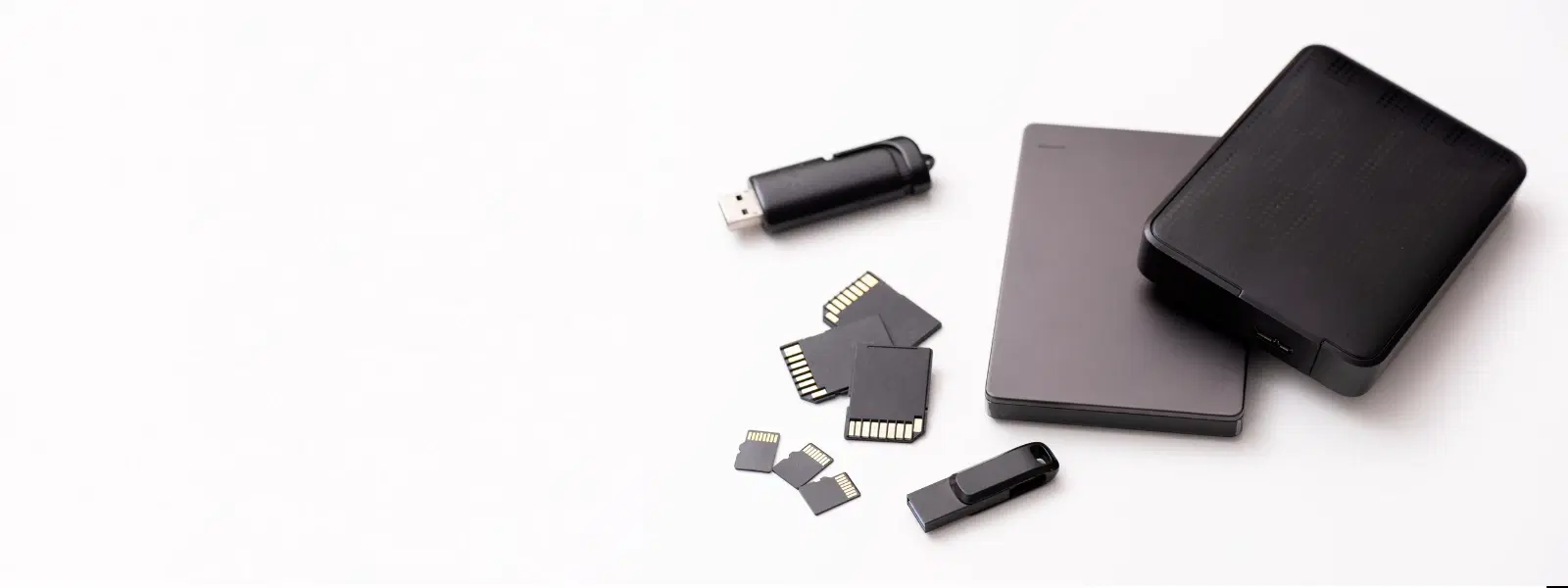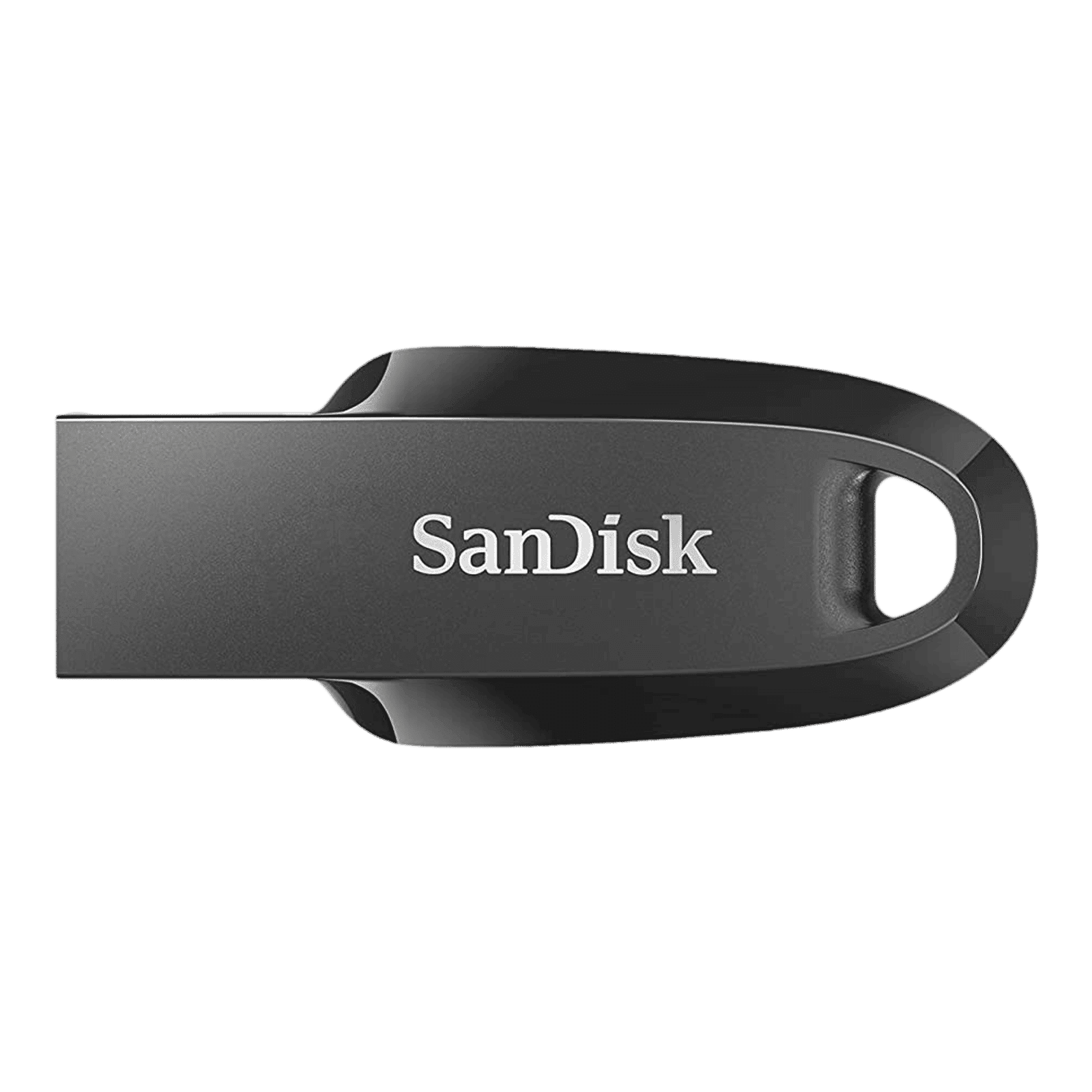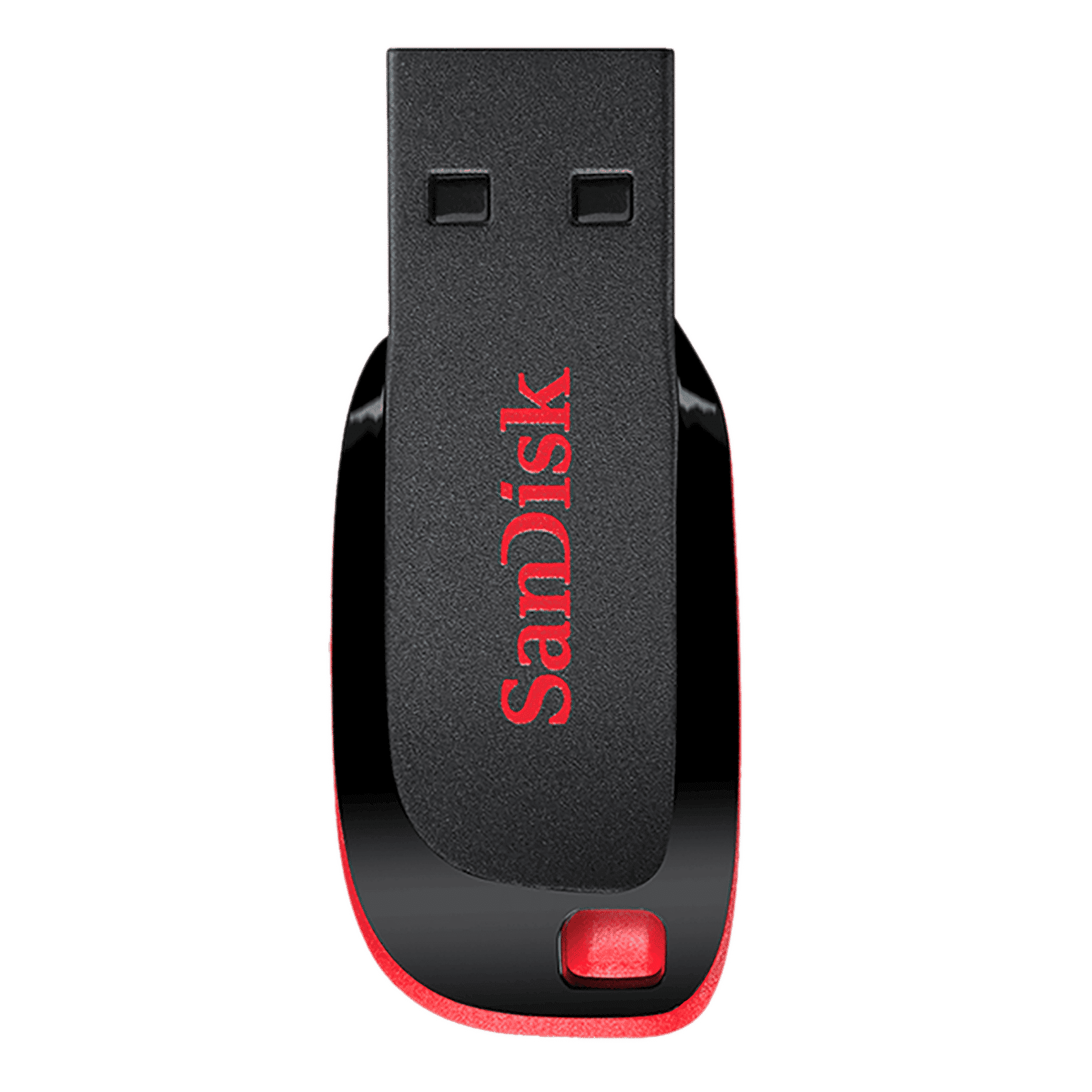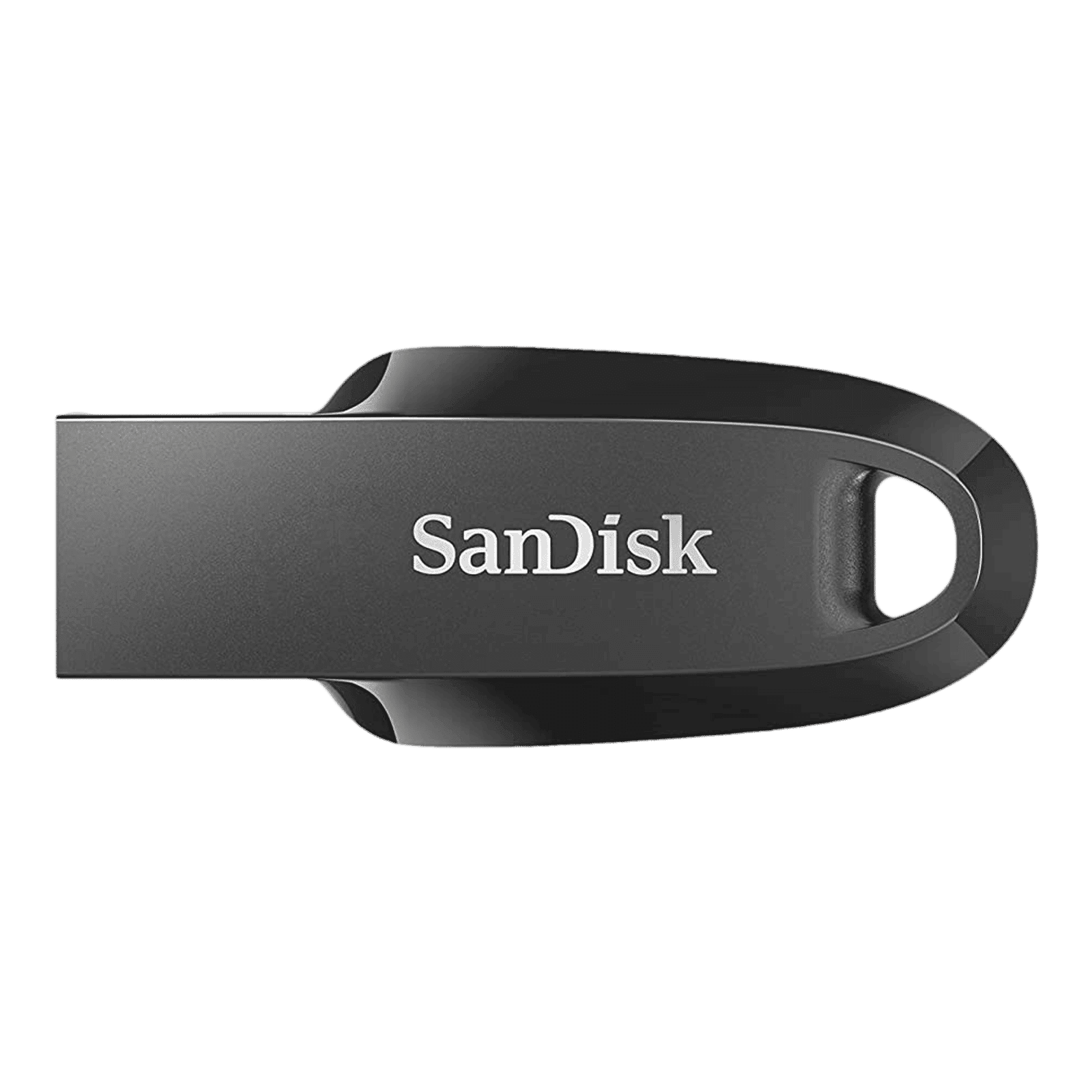
Consumer Electronics
•05 min read

Buy SanDisk Ultra Curve 128GB USB (3.2) Pen Drive (Compact Design, Black ) online at best prices from Croma. Check product details, reviews & more. Shop now!
In today's digital age, USB mass storage devices are indispensable tools for data storage and transfer. Whether you are a tech enthusiast, a budding professional, or managing family data, these portable devices simplify everyday tasks such as storing important files, quickly transferring documents, and backing up cherished memories. This guide will show you how to set up, connect, troubleshoot, and optimise your USB mass storage device, so you can enjoy seamless performance and reliability.
USB mass storage devices include USB drives, external solid-state drives (SSDs), and thumb drives. These devices are known for their portability and ease of use. They allow you to carry large amounts of data conveniently and are designed to work across PCs, laptops, and many other systems. Their compact design, combined with robust storage capacities, makes them popular among users who are always on the go.
The secret behind these devices lies in their simple plug-and-play functionality. Thanks to their self-contained file systems, plugging the device into your system activates an automatic setup, meaning you can start transferring files almost immediately. Most operating systems, including Windows, macOS, and Linux, offer extensive support and familiar interfaces that make file management a breeze for all users.
Setting up your USB device is straightforward. Begin by inserting the device into an available USB port on your computer or laptop. For most systems, necessary drivers install automatically. For Windows and macOS users, a brief prompt may appear indicating that the system is recognising your device. If, for any reason, drivers are not automatically installed, check your PC’s device manager or system settings to manually initiate the update process.
Formatting ensures your device is in optimal condition, free from any old or unused files, and improves compatibility across multiple systems. On Windows, you can format the device by right-clicking on the drive in File Explorer and selecting the 'Format' option. On macOS, use Disk Utility to erase and format your device, while Linux users can employ similar disk management tools available in their distributions. Remember to back up any needed files before formatting.
Once properly set up, locating your files on a USB device is a simple task. For Windows users, open File Explorer and look for the new drive icon in the sidebar. macOS users can navigate through the Finder to locate the drive. With a well-organised directory, you can quickly and confidently locate, open, and manage your files. Whether it’s important documents, photos, or multimedia files, effective file management is central to a seamless user experience.

Buy SanDisk Cruzer Blade 64GB USB (2.0) Pen Drive (High-Capacity Drive, Red) online at best prices from Croma. Check product details, reviews & more. Shop now!
When transferring files from your computer to your USB mass storage device, it is crucial to maintain organised folders and use clear file names. This makes it easier to find what you need later. Practice the habit of regularly backing up your critical documents and media files. When transferring large files, ensure your system isn’t overloaded with other tasks; this can help prevent slow performance and data corruption. With the simple drag-and-drop feature supported by modern operating systems, moving files becomes a natural, stress-free process.
There may be times when your USB device is not immediately recognised by your computer. This issue can often be attributed to outdated device drivers or a faulty USB port. First, try unplugging the device and inserting it into a different port. If the issue persists, check your device manager or disk utility for any alerts regarding driver updates. Additionally, consider restarting your computer to refresh the hardware connections and enable automatic driver updates where available.
For general troubleshooting, it is helpful to adopt a systematic approach. Start by verifying that the USB port itself functions correctly and that no physical damage is present on the cable or connector. Occasionally, corrupted files may slow down operations or render the device unusable. Performing a quick scan for errors and regularly updating your operating system can mitigate these issues. A consistent maintenance routine ensures that your device remains efficient and reliable.
Pro Tip: Did You Know?
Regularly updating your USB device drivers can prevent compatibility issues and improve performance. Most operating systems provide automatic updates, but manual checks can ensure you’re always up-to-date.
Compatibility plays a key role in ensuring your USB mass storage device operates smoothly across various systems. Modern devices operate with USB versions such as USB 2.0, USB 3.0, and USB-C. When purchasing a USB device, consider the ports available on your devices and make sure they are compatible. Many users enjoy the convenience of high-speed data transfers found in USB 3.0 and above. Simply check the specifications printed on your device or its packaging to ensure that it meets your needs.
Organising files effectively on your USB drive not only aids in quick retrieval but also secures your data against accidental loss. Create clearly named folders for documents, media, and other categories. Consider using encryption tools to protect sensitive files, adding an extra layer of security. There are several software tools on the market that assist in advanced file management, enabling you to sort, search, and categorise files with ease. By maintaining a rigorous organisational system, managing your files becomes a significantly more pleasant experience.
When managing your digital life, every small advantage counts. Just as you optimise your USB mass storage device for efficient performance, Tata Neu offers NeuCoins rewards to enhance your shopping experience across a wide range of consumer electronics. Every purchase can earn up to 5% NeuCoins, whether you opt for online shopping or in-store purchases at related outlets. These rewards allow you to enjoy extra savings across your favourite technology brands. With express delivery available on many orders placed before 6 PM (check availability), you ensure your tech gadgets reach you right when you need them, further reinforcing the reliability and trustworthiness of the platform.

Buy SanDisk Ultra Curve 64GB USB (3.2) Pen Drive (Compact Design, Black ) online at best prices from Croma. Check product details, reviews & more. Shop now!
Tata Neu is dedicated to providing you with expert guidance tailored to your needs. Just as troubleshooting common USB issues can save you valuable time and stress, reliable customer support and detailed guides from Tata Neu ensure that you always have the help you need. Whether you are new to managing USB drives or you are a seasoned tech user, expert assistance is only a few clicks away on the Tata Neu app, ensuring you can focus on your work and passions without interruption.
USB mass storage devices use plug-and-play technology to connect to computers and other devices, enabling users to store, transfer, and access files with ease.
Connect the USB device to your computer, open File Explorer (Windows) or Finder (macOS), and navigate to the USB drive to access stored files.
This could be due to outdated drivers, hardware issues, or compatibility concerns. Check your device manager or disk management tool to diagnose the problem.
Right-click on the USB drive in your file explorer, select 'Format', choose your preferred file system (such as FAT32 or NTFS), and confirm to start formatting.
Ensure the USB port is operational, update your device drivers, and try connecting your device to another computer to isolate the issue.
USB mass storage devices are versatile tools that simplify the way you manage your data every day. By understanding the basics of setup, usage, troubleshooting, and compatibility, you are well-equipped to make the most of these effective devices. Integrating proactive strategies such as regular driver updates and organised file management will ensure that you continuously get the best performance. As you progress and unlock the benefits of advanced technology, remember that every step towards effective tech management is a step towards a smarter, more efficient lifestyle.
Explore more about consumer electronics and stay updated with the latest tips and guides to enhance your tech experience. With trust and value at the heart of every recommendation, Tata Neu is here to support your journey towards a seamless digital lifestyle, backed by essential rewards like NeuCoins for every transaction you make.